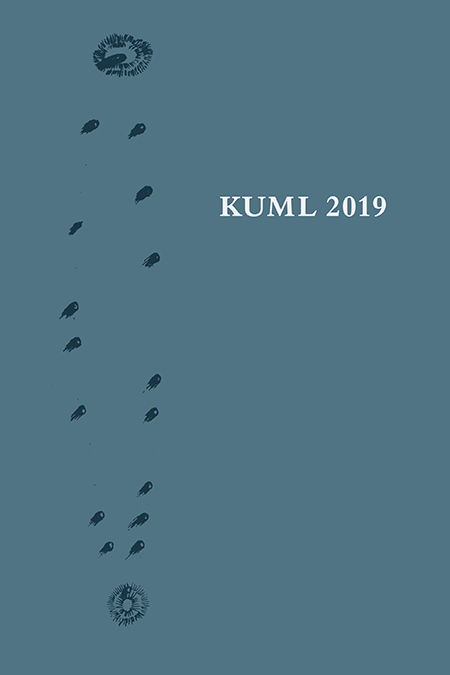Den sene vikingetids amfibiske militæroperationer
Eksperimentalarkæologiske forsøg med landsætning og kampformationer
DOI:
https://doi.org/10.7146/kuml.v68i68.126046Nøgleord:
Vikingetid, MilitæroperationerResumé
Late Viking Age amphibious military operations
Experimental archaeological trials with landings and combat formations
The military operations conducted by Viking Age Scandinavian warriors were immediately recognised as being something extraordinary. Contemporary European writers detail the Norsemen’s attacks, raiding monasteries and rural and urban settlements, while today’s scholars frequently discuss how the Vikings were able to carry out these military operations with such precision and efficiency.
Seaborne operations were a trademark of Scandinavian Viking warriors. Sea transport of an armed crew, along with supplies and other equipment needed for the campaigning army, enabled both small and large-scale military operations to be undertaken. These operations were often characterised by an element of surprise. A precondition for conducting the lightning seaborne attacks was the ability to plan and execute the different phases of an amphibious military operation.
In this article, we investigate different aspects of amphibious military operations as mounted by Scandinavian warriors in the Late Viking Age (c. AD 900-1100). The investigation was structured using a modern doctrine for undertaking amphibious operations as employed by United States Armed Forces. This doctrine is, of course, not directly applicable when analysing amphibious operations conducted in the Late Viking Age. However, its description of the different phases involved in these operations provides a way of structuring an investigation to ensure that all relevant issues are considered when scrutinising the evidence for operations undertaken in the Late Viking Age.
All the different phases described in the doctrine are analysed: from the initial planning to the embarkation of personnel, equipment and supplies, followed by rehearsals and the movement of the fleet, and finally the actions performed during the actual landing operation. It is, however, the latter, including the subsequent formation of fighting units, that is the primary focus of the article.
Based on the results and insights acquired during sailing trials previously conducted by the Viking Ship Museum in Roskilde, and by undertaking new experimental archaeological trials involving landings and combat formations, the archaeological, iconographical and written evidence is analysed from a new perspective (tables 1-2). It is argued that the practices performed onboard the longships when the fleet was under way contributed to forging the crew into a coherent fighting unit and, furthermore, that the organisational structure onboard provided the foundation for both the mounting of well-organised landing operations and the subsequent formation of the fighting units (figs. 1-6).
The insights and results gained from the experimental archaeological trials and examinations of the historical evidence make it possible to propose a theoretical model for calculating: a) the necessary length of a landing beach in relation to a given fleet size, b) the required size of the beachhead during the landing operation, and c) the size of the area that each unit/ship crew had to control in order to conduct a safe and effective landing operation (fig. 7).
In conclusion, the experimental archaeological landing and formation trials described in this article clearly show how remarkably swiftly Viking Age amphibious operations could be carried out if well-prepared and smoothly undertaken. And, judging from the written evidence, this was something of which the Vikings had a firm and efficient grasp.
Downloads
Publiceret
Citation/Eksport
Nummer
Sektion
Licens
Fra og med årgang 2022 er artikler udgivet i Kuml med en licens fra Creative Commons (CC BY-NC-SA 4.0).
Alle tidligere årgange af tidsskriftet er ikke udgivet med en licens fra Creative Commons.


